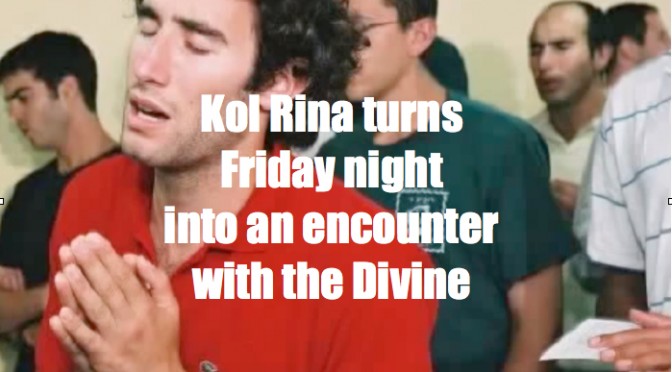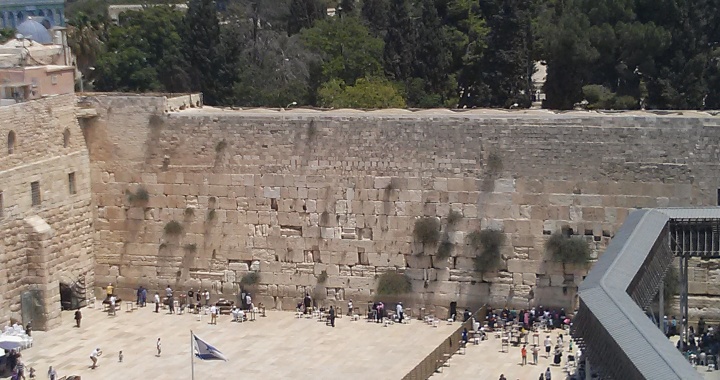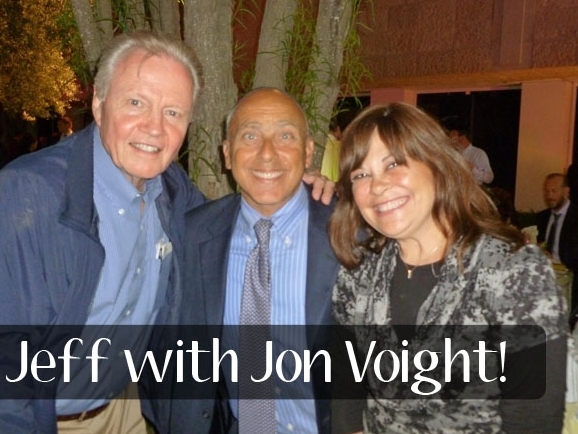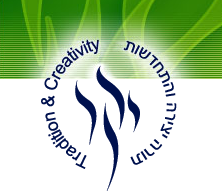Rating: 5/5- Beautifully sung Carlebach service that gave me chills more than once
Services Attended: Saturday Morning and Friday Night
Date: September 20, 2014 and October 17th, 2014
Observance: Orthodox
Time of Service: Mincha 20min after candlelighting on Friday, and 8:30am-11:15am Saturday Morning
Mechitza: Behind men’s section, shtender towards back of men’s section
Women: No leadership
Meals: Meals offered at least for Friday night, no mention on Saturday
Frequency: Every Friday Night, Saturday Morning, Holidays
Family friendly service: While there were families, there weren’t too many, and were not a focus by any means
Sermon: Sometimes all in Hebrew, sometimes in Hebrew and English. Announcements in Hebrew and English
Review:
Friday Night: Friday night services were what I’ve come to expect from Kol Rina. The shul was packed and people came ready to sing and dance. Tunes are Carlebach. Great energy, and great way to bring in Shabbat. They were also able to set me up with a wonderful meal afterwards. See below for my original full review.
Saturday Morning: In 2008, when I was on Alexander Muss High School in Israel, I went to a shul that we referred to as the “Bomb Shelter Shul”. It was honestly a life changing experience, as I had never davened like that before, and I unfortunately didn’t know it’s actual name. That was until a few days ago, when a friend pointed me to Kol Rina. My hopes were high that this was indeed the shul I was looking for, and I was not to be disappointed.
Upon arriving, just outside the shul, I was flagged down by a man asking if I would be the 10th man for their minyan. I agreed, and asked to which shul he belonged. Kol Rina, he said. What a lovely coincidence. I admit I was a little concerned, as I had showed up some 20 minutes late, and they had no minyan yet? As you’ll find out, this was the only reason I didn’t rate them a 6/5.
As I walked down the stairs and into the shul, an immediate sense of nostalgia and recognition overtook me. I had finally found it! And it was not to disappoint. The Carlebach style minyan was led beautifully, and those who were there joined in such a way that I felt like I was part of a live choir, supporting a shaliach tzibur with made up harmonies on the spot. I can’t really describe the feeling other than to say you have to experience it yourself. At various points I even got shivers from the beauty of the davening. Had the room been full, and not half full, I think I would have given this minyan a 6/5. In addition, the women’s section was rather lacking, both in voice and in numbers.
Simchat Torah: I attended Kol Rina erev Simchat Torah, and it was great. Lots of singing and dancing, and it went on quite a long time. It was pretty packed to start, but around the 3rd Hakafah people started to clear out for dinner, which meant there was more room for dancing. One of the Torahs was passed back to the women’s section each hakafah so they could dance with a Torah as well.
For those that love Carlebach, singing, and harmony, there’s not a better weekly Shabbat minyan in Jerusalem.
Kol Rina is located at 26 Be’er Sheva Street, Nachlaot, Jerusalem. Known also as the Bomb Shelter Shul, it has a surface level entrance and goes straight down a flight of stairs. There is a common area with couches, and then the left door is for women and the right for men. For more information, visit their website.




